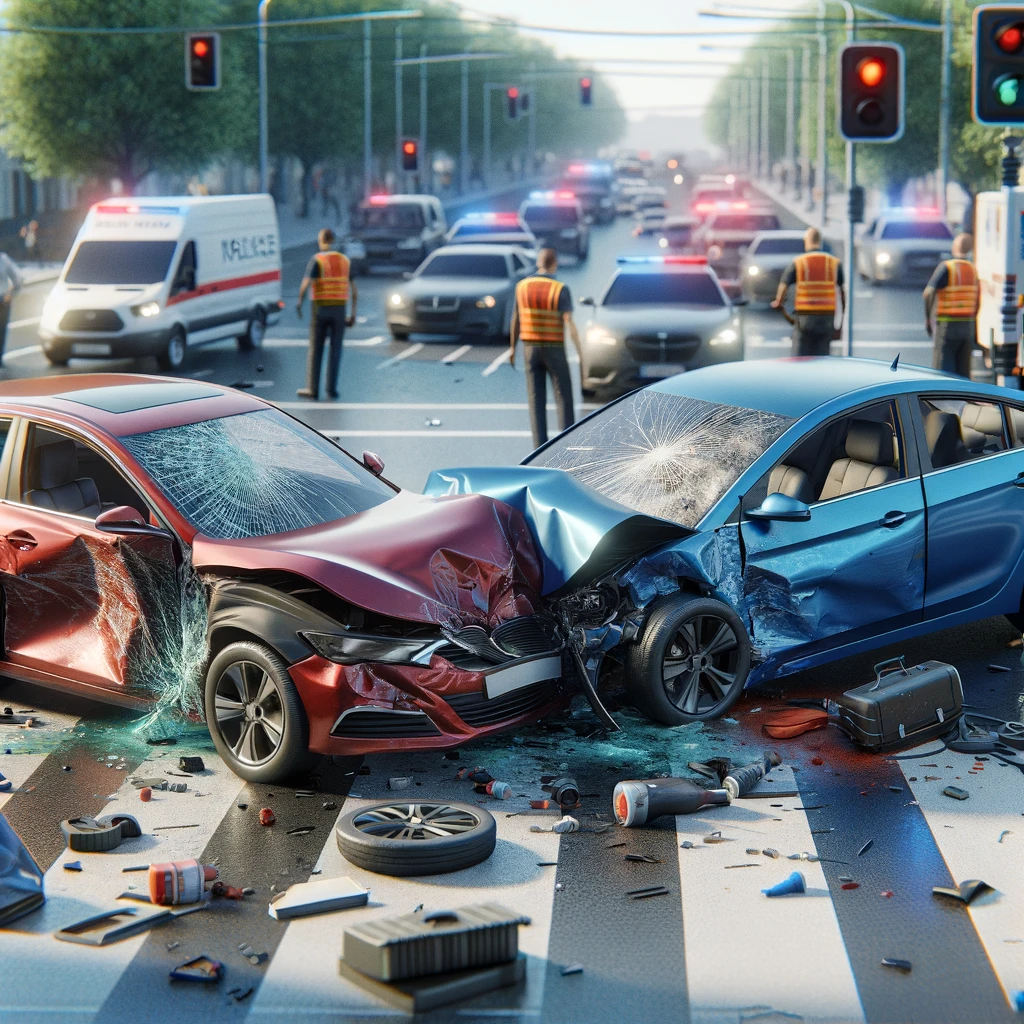We rarely think of the potential for injury when we get in our cars every day. It’s something we do so often that the risks seem remote. However, automobile accidents are among the leading causes of preventable death and injury worldwide.

The fact that driving is so common and the extreme forces that occur in traffic accidents combine to create the greatest risk for severe injury most people face. However, the types of injuries that may arise are wide-ranging. In many cases, people walk away from what looks like a devastating car crash with little to no injuries. Conversely, you might see what looks like a relatively minor accident that results in lifelong disability.
This post will explore the types of injuries that may occur in car accidents and their effects on people.
Soft Tissue Injuries
Soft tissue injuries are among the most common you may experience in a car accident. This category can include everything from minor bruising to severe injuries to muscles, tendons, or ligaments. Examples of common soft tissue injuries include sprains and strains. Whiplash is a soft tissue injury common in car accidents. This type of injury occurs when the sudden jolt of a crash causes the head and neck to whip forward and back.
One issue with soft tissue injuries is that they are not always apparent in the moments immediately after an accident. This often causes injury victims and medical personnel to miss them. Symptoms include pain, swelling, bruising, and limited mobility. Diagnosis typically involves physical examinations and imaging tests such as X-rays or MRIs. While many soft tissue injuries heal with time, some may lead to chronic pain or long-term disability.
Scrapes and Cuts
Car accidents often result in scrapes and cuts to vehicle occupants. They typically result from broken glass or sharp debris. These injuries range from minor abrasions to deep lacerations and puncture wounds. Immediate first aid, including cleaning and dressing the wound, is crucial to prevent infection. Severe cuts may require stitches or other medical treatments. While many scrapes and cuts heal without significant issues, some can lead to scarring and disfigurement.
Bone Fractures
The forces of a car accident can easily break even the strongest bones. Common fractures include the ribs, arms, legs, and pelvis. In many cases, bones heal well, and the individual eventually has a full recovery. However, it is not uncommon for bone fractures to result in lifelong problems. Even those who fully heal may experience intense short-term pain and temporary disability that disrupts their life.
It is also important to recognize the type and severity of fractures. The difference in outcome can vary significantly from simple to compound fractures. You also have comminuted fractures that involve the bone shattering into multiple pieces. These factors can affect treatment and recovery time as well as the risk of infection or improper healing.

Head Injuries and TBI
Head injuries are also common in car accidents. In many cases, head injuries also result in traumatic brain injuries (TBI). On the low end, you have mild TBI like concussions. However, moderate brain injuries can result in significant brain damage and cognitive impairment. Symptoms include headaches, dizziness, confusion, and loss of consciousness. Diagnosis often involves neurological exams and imaging tests like CT scans or MRIs. Treatment can also vary significantly depending on the type of brain injury and its effects.
Spinal Cord Injuries
Spinal cord injuries are among the worst injuries you can experience in a car accident. These injuries occur when the spinal cord is either partially or completely severed. While some may be recoverable, spinal cord injuries can result in complete loss of motor function below the injury site. The effects can be life-altering, necessitating ongoing care and adjustments to daily living.
When asked, a spinal cord injury lawyer said, “It is important to recognize the variation in spinal cord injuries. Two key factors to consider are the location and severity of the injury. The higher the injury, the more potential there is for full-body effects. The difference between complete and incomplete injuries can also be significant.”
Internal Injuries
Internal injuries from car accidents, such as organ damage and internal bleeding, are often life-threatening and require immediate medical attention. However, initial symptoms are often subtle, meaning people may miss the signs in the moments after the accident. Symptoms to look for include abdominal pain, dizziness, nausea, and bruising. Commonly affected organs include the liver, spleen, and kidneys. Internal injuries can lead to long-term health complications and significant medical expenses, making prompt diagnosis and treatment crucial.
Loss of Limbs
Limb loss and amputations in car accidents are severe injuries with profound physical and emotional impacts. In some cases, the severe trauma of the accident can remove the limb or give cause for immediate amputation. However, complications from injuries may result in a need for amputation later. Regardless of which limb or the location, these injuries will have lifelong consequences. Beyond medical treatment, the individual will need extensive physical and occupational therapy to adapt.
Emotional Distress
Car accident injuries are not limited to physical damage. The emotional distress from car accidents can be debilitating. Individuals may experience issues with PTSD, anxiety, or depression. Symptoms include flashbacks, nightmares, mood swings, and difficulty concentrating. Emotional trauma can significantly impact daily life, relationships, and the ability to work. Treatment plans often include therapy, medication, and support groups.The aftermath of a car accident may result in physical, emotional, and financial costs for the victims. That’s why people should always seek medical attention after a car crash. You may even need the assistance of an attorney to recover compensation
